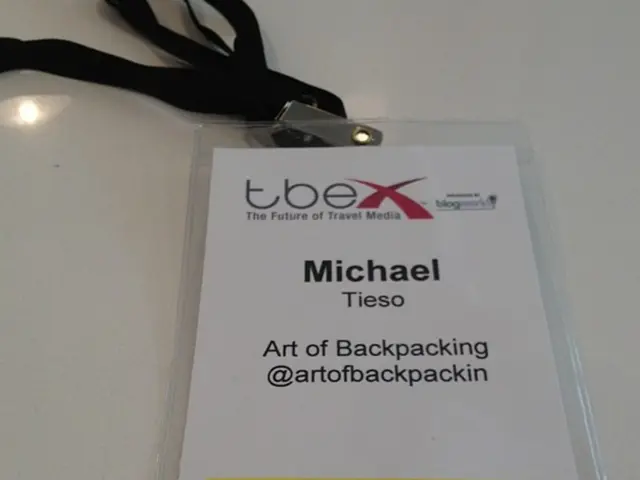Guide for Effective Handling of Various Work Personality Styles
In the modern workplace, understanding the unique personalities of employees is crucial for effective management. This article discusses the importance of recognizing and adapting to diverse personality traits, using the Myers-Briggs Type Indicator (MBTI) and the Big Five models as frameworks.
Recognizing Employee Personality Types
The Myers-Briggs Type Indicator (MBTI) identifies 16 distinct personality types, each with unique traits that influence how employees work, communicate, and respond to management. Some examples include:
- ISTJ (The Inspector): Practical, responsible, and organized, thriving with clear expectations and orderly environments.
- ISFJ (The Defender): Grounded, conscientious, service-oriented, and dedicated, preferring structure and reliability.
- INFJ (The Advocate): Insightful, creative, empathetic, and valuing meaningful relationships, excelling in roles requiring understanding and support.
- ENTJ (The Commander): Natural leaders who prefer control, order, and strategic thinking, disliking chaotic or unstructured work environments.
- ENTP (The Debater): Creative, innovative, and thriving on challenge and variety, disliking repetitive, dull tasks.
The Big Five model assesses Openness, Conscientiousness, Extraversion, Agreeableness, and Neuroticism, providing scientifically validated insights into workplace behavior and hiring decisions.
Managing Different Employee Personalities
Effective management depends on recognizing and adapting to these diverse personality traits. Common strategies include:
- Authoritative Management: Suitable for urgent decision-making with less time for consultation, but may lead to higher turnover if overused.
- Consultative and Democratic Management: Encourages employee input before decisions are made, promoting motivation and empowerment, suitable for employees who value collaboration.
- Persuasive Management: Combines top-down decisions with transparent rationale to foster trust, especially useful for less experienced teams.
- Transformational Leadership: Inspires and challenges employees to grow and innovate, ideal for adaptable employees who thrive in dynamic environments.
To manage MBTI types effectively:
- Provide ISTJs and ISFJs with clear rules, structured roles, and stable environments.
- Support INFJs with opportunities to connect their work to meaningful purposes and interpersonal relationships.
- Give ENTJs leadership roles, autonomy, and environments with order and strategic challenges.
- Engage ENTPs with innovative projects, variety, and social interaction.
Customizing management styles to fit personality traits enhances productivity, job satisfaction, and team cohesion.
The Importance of Personality Understanding
Recognizing and understanding personalities can help in various ways:
- Playing to each team member's strengths: Can increase productivity and morale.
- Knowing one's own and others' personality types: Helps understand how team members work best and what enables them to be productive.
- Mediation of conflicts: When different work personalities clash, being ready to take action and mediate the conflict professionally is essential.
Managing Remote Teams
In a digital age, managing remote teams requires different approaches. Using communication tools like Slack is essential for maintaining a team's culture, which will be entirely digital.
The Forest Fire Personality Type
The forest fire personality type is a talented and hard-working individual who is a risk-taker and may not play well with others. To best manage a forest fire, ensure they interact with others in a positive way and find a balance between giving them personal space and keeping them in line. Emphasizing the team over the individual can help reduce tensions and remind team members of their common goal.
Conclusion
Understanding personalities like those identified by MBTI or Big Five allows managers to tailor communication, motivation, and roles. Combining this insight with adaptive leadership styles such as transformational or consultative management yields the best outcomes in managing diverse employee personalities in the workplace.
- The Myers-Briggs Type Indicator (MBTI) and the Big Five models serve as essential frameworks for recognizing and adapting to diverse personality traits among employees.
- Effective management strategies, such as authoritative, consultative, democratic, persuasive, or transformational leadership, cater to various employee personality types, contributing to enhanced productivity, job satisfaction, and team cohesion.
- For instance, providing ISTJs and ISFJs with clear rules, structured roles, and stable environments is essential for their productivity and job satisfaction.
- On the other hand, INFJs thrive when their work connects to meaningful purposes, while ENTJs excel in leadership roles with autonomy and strategic challenges.
- Understanding personalities can also help manage remote teams effectively, emphasizing the importance of using communication tools like Slack to maintain a digital team culture.
- The forest fire personality type, characterized by risk-taking and a tendency to work independently, requires a delicate balance between giving them personal space and keeping them in line, encouraging teamwork and reminding them of their common goal.




